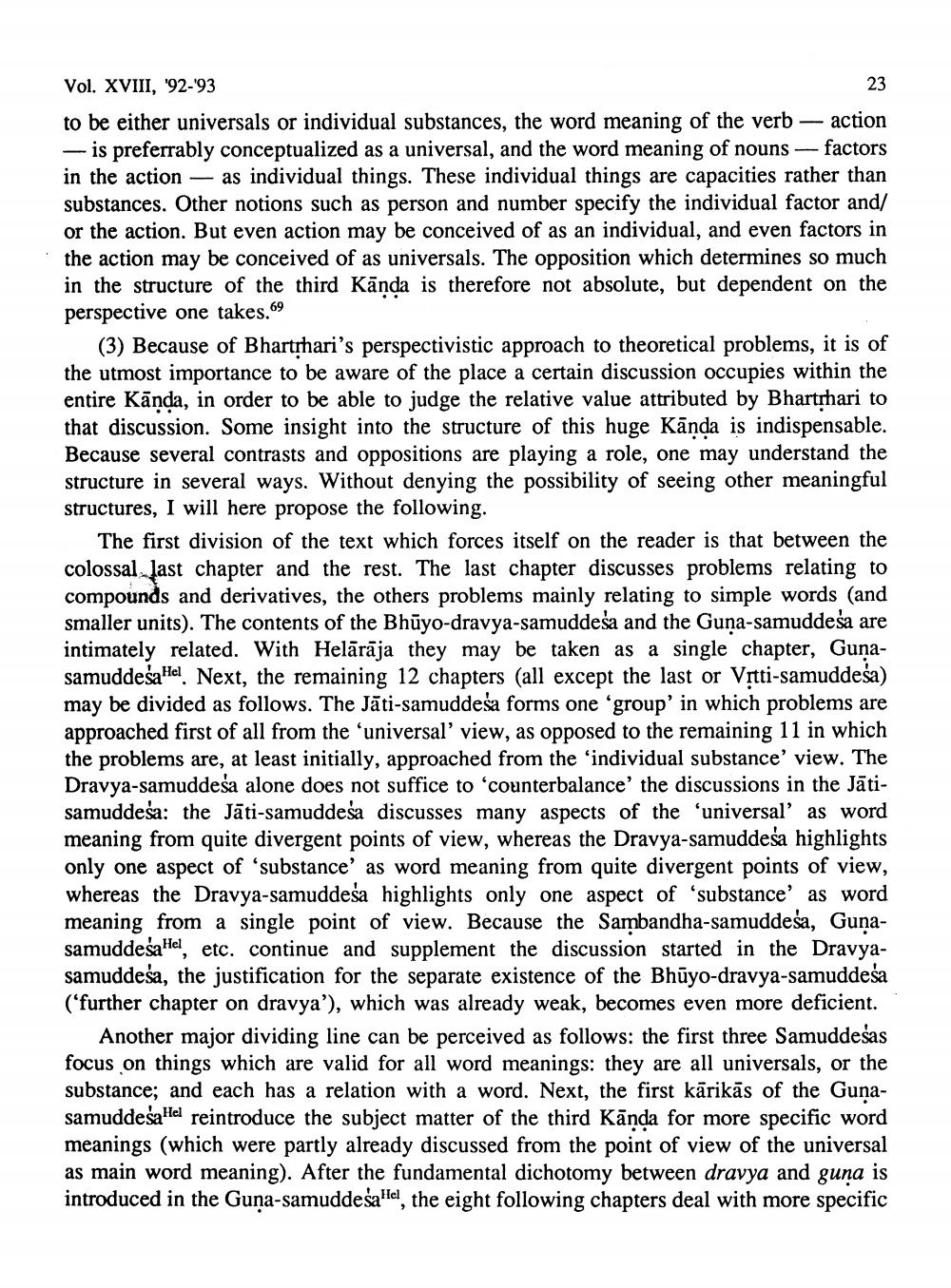________________
23
Vol. XVIII, '92-'93 to be either universals or individual substances, the word meaning of the verb — action - is preferrably conceptualized as a universal, and the word meaning of nouns — factors in the action - as individual things. These individual things are capacities rather than substances. Other notions such as person and number specify the individual factor and/ or the action. But even action may be conceived of as an individual, and even factors in the action may be conceived of as universals. The opposition which determines so much in the structure of the third Kānda is therefore not absolute, but dependent on the perspective one takes.69
(3) Because of Bharthari's perspectivistic approach to theoretical problems, it is of the utmost importance to be aware of the place a certain discussion occupies within the entire Kānda, in order to be able to judge the relative value attributed by Bhartrhari to that discussion. Some insight into the structure of this huge Kānda is indispensable. Because several contrasts and oppositions are playing a role, one may understand the structure in several ways. Without denying the possibility of seeing other meaningful structures, I will here propose the following.
The first division of the text which forces itself on the reader is that between the ossal last chapter and the rest. The last chapter discusses problems relating to compounds and derivatives, the others problems mainly relating to simple words (and smaller units). The contents of the Bhūyo-dravya-samuddeša and the Guna-samuddesa are intimately related. With Helārāja they may be taken as a single chapter, Guņasamuddesa Hel. Next, the remaining 12 chapters (all except the last or Vrtti-samuddesa) may be divided as follows. The Jāti-samuddesa forms one 'group' in which problems are approached first of all from the 'universal' view, as opposed to the remaining 11 in which the problems are, at least initially, approached from the 'individual substance' view. The Dravya-samuddesa alone does not suffice to 'counterbalance' the discussions in the Jātisamuddesa: the Jāti-samuddesa discusses many aspects of the universal as word meaning from quite divergent points of view, whereas the Dravya-samuddesa highlights only one aspect of ‘substance as word meaning from quite divergent points of view, whereas the Dravya-samuddesa highlights only one aspect of 'substance as word meaning from a single point of view. Because the Sambandha-samuddesa, Gunasamuddesahel, etc. continue and supplement the discussion started in the Dravyasamuddeša, the justification for the separate existence of the Bhūyo-dravya-samuddeša ("further chapter on dravya'), which was already weak, becomes even more deficient.
Another major dividing line can be perceived as follows: the first three Samuddešas focus on things which are valid for all word meanings: they are all universals, or the substance; and each has a relation with a word. Next, the first kārikās of the Gunasamuddesa Hel reintroduce the subject matter of the third Kānda for more specific word meanings (which were partly already discussed from the point of view of the universal as main word meaning). After the fundamental dichotomy between dravya and guna is introduced in the Guna-samuddesa Hel, the eight following chapters deal with more specific




